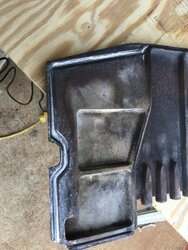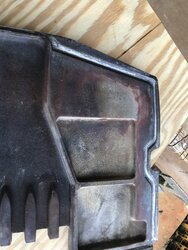SpaceBus
Minister of Fire
This also happened, which I'm not pleased about. This was a brand new thermostat as well. I thought the threads in the sotve were a bit deeper. Thankfully there was enough left to put it in the other threaded boss. I'm about to try and turn the broken piece out wiht a screwdriver and a mallet after the stove warms up again.





 LOL!! I know it doesn't measure up to the snows up north but since we don't see snow that often things / people get crazy around here.
LOL!! I know it doesn't measure up to the snows up north but since we don't see snow that often things / people get crazy around here.